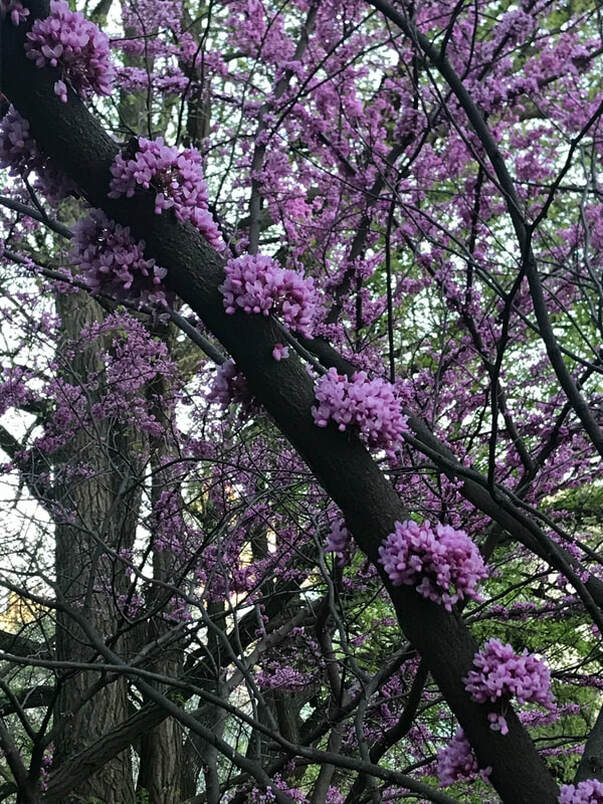 Eastern Redbud in bloom in Central Park Eastern Redbud in bloom in Central Park Trees are bursting forth in flower in our parks, offering heady, sensory ecstasy of color, shape, and smell. Yet missing from the vibrant whites, pinks, yellows, and purples on some trees is a touch of green. On these trees, flowers are blooming but leaves have yet to appear. Why is it that some trees -- Eastern Redbuds, Cornelian Cherry Dogwoods, Magnolias, and Crabapples to name a few -- flower before their leaves unfurl? With most plants, leaves begin to unfold and then flowers bloom, but for some the sequence is reversed. An insightful friend with a sense of humor likened this behavior human adolescence, with often distracting reproductive hormones triggering well ahead of long-term sustaining activities, like education and career advancement. Flowers, as you know, are plants' reproductive structures. Once pollinated, they form fruit that bear seeds that enable new life. Leaves, on the other hand, are plants' source of sustenance, enabling the production of food through photosynthesis. Through chlorophyll and tiny stomata found primarily on the leaf's lower surface (a square centimeter of a leaf contains anywhere from a few thousand to hundreds of thousands) leaves breathe in carbon dioxide and breathe out blessed oxygen on which we depend, while producing sugar for plant nourishment. And through transpiration, water absorbed through root hairs evaporates through stomatal openings from the leaf surface, enabling water and minerals to be absorbed from the soil and conducted to the top of the plat. Without leaves, trees die once stored sugar is depleted. Why would a tree flower before leafing out? Hysteranthous -- the behavior of leaves expanding after flowers have opened -- occurs for a variety of reasons, which give these trees an edge in reproduction. These trees often pollinate through wind (19% of all pollination), which drifts more freely through a tree canopy in the absence of leafy vegetation, making it easier for these trees' inconspicuous flowers (catkins and cones) to be pollinated. And for the 80% of trees that pollinate by vertebrate or insects, early flowering offers the advantage of fewer other blossoms to distract pollinators. For understory trees and plants, like Redbuds, Forsythia, and Witch Hazel, that blossom solely from stored nutrients, flowering early avoids competition with vegetative growth for limited resources. Early flowering also allows for greater time for fruit growth and seed maturation as well as dispersal. Fruits and seed dispersed by birds need to mature to coincide with bird migration. The sequencing of trees' and plants' flowering and leafing is diverse and driven by physical, biotic, and environmental conditions. One wonders how the same impact human reproduction.
0 Comments
Leave a Reply. |
About this Blog
Hi! I'm Nancy Kopans, founder of Urban Edge Forest Therapy. Join me on an adventure to discover creative ways to connect with nature in your daily life, ways that are inspired by urban surroundings that can reveal unexpected beauty, with the potential to ignite a sense of wonder. Archives
April 2023
Categories
All
|

 RSS Feed
RSS Feed